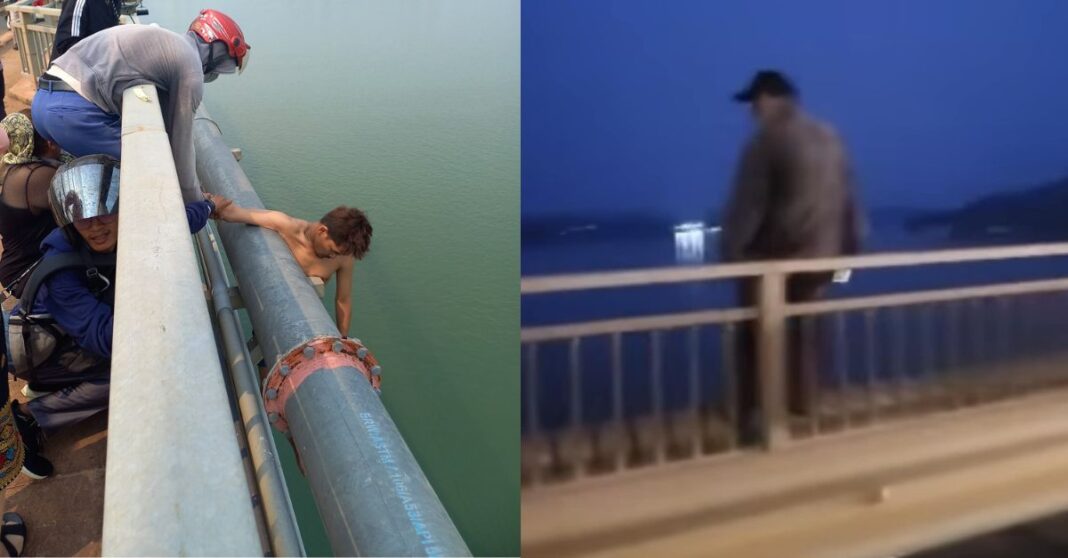Two men received assistance just in time before jumping into the river from the Laos-Japan Bridge in Pakse on Tuesday, thanks to local authorities and passersby.
The first incident occurred at around 2:20 PM when a video surfaced on Facebook of authorities holding a guy by the arm, as his body hangs from the rails of the bridge.
The man was not identified by police or social media users, although netizens speculated that the man was under the influence of drugs, reports Lao Post.
Upon further inspection, a video emerged of the guy getting into the authorities’ car, while shouting, “Do I look like someone who takes drugs? Do I look like your parents who like to get high?” Police then took him into the car and drove off to further investigate the incident.
The second incident occurred at 6:51 PM on the same day, when a Facebook user posted a picture of a man standing against the outside rails of the bridge to his feed, saying “Happening right now… what’s going on?” He then continued by saying, “The 2nd person today at Pakse Bridge.”
Moments later, authorities managed to rush to the scene and help safely rescue the man before he jumped. They then took him to a secure place where they tried to comfort him.
The man who was not identified by the authorities was asked why he wanted to die by suicide. He replied while tearing up, that it was because his wife had left him and had taken his two boys with her 10 days ago.
On 31 March, a religious Buddhist ceremony was held to bless the bridge after a wave of tragic suicides which have been happening since March, to hopefully cleanse away the bad spirits.
Shocked at the growing number of such incidents, members of the public have wondered whether this may be due to a phenomenon known as “suicide contagion,” in which exposure to suicide can increase the risk of suicide in vulnerable individuals.
According to a 2021 report by the World Health Organisation (WHO), about 210,000 people in Laos suffer from a mental, neurological, or substance use condition.
The report suggests that over 95% of people with serious mental illness remain untreated, while 75% of the population, living in rural areas, is unable to access mental health services.



